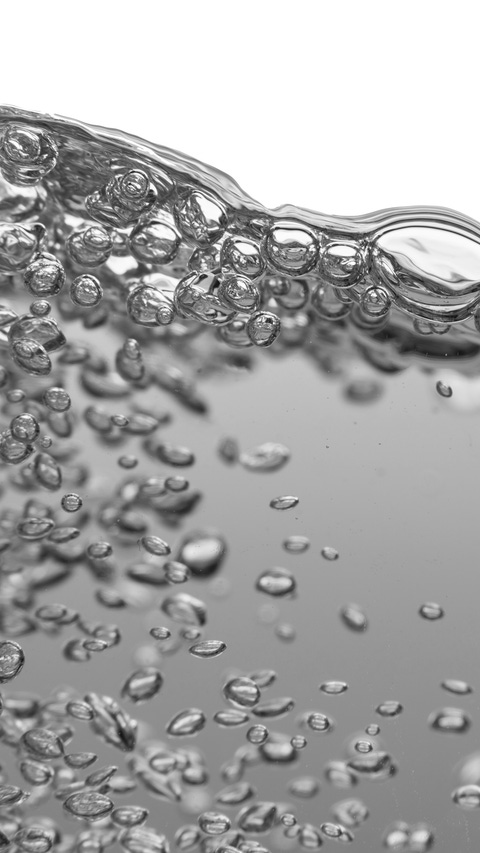Defoamers and Their Impact on Reducing Foam in Liquid Systems
Defoamers and Their Impact on Reducing Foam in Liquid Systems
Blog Article
Discover the Leading Benefits of Utilizing Defoamers in Industrial Processes
The application of defoamers in commercial procedures provides a variety of compelling advantages that can enhance functional efficiency and product quality. By properly regulating foam production, these representatives not just maximize material circulation yet additionally add to substantial expense reductions and enhanced sustainability. Their application extends multiple fields, which elevates concerns concerning their function in mitigating environmental impact while guaranteeing consistent result. Recognizing these benefits is vital for industries aiming to fine-tune their procedures. The effects of adopting defoamers might be much more profound than initially perceived. What details benefits could your company harness?
Improved Process Performance
Maximizing industrial procedures frequently entails attending to frothing issues, which can impede functional effectiveness. Foam development can disrupt the correct functioning of tools, minimize the effective use of sources, and make complex the surveillance of critical criteria. By carrying out defoamers, sectors can efficiently alleviate these problems, resulting in streamlined procedures and enhanced productivity.
Defoamers work by destabilizing the foam structure, enabling rapid collapse and considerable reduction in foam volume. This activity not just improves the flow of products with devices, such as reactors, mixers, and pipes, but likewise decreases interruptions triggered by foam overflow. Equipment downtime is reduced, allowing for a much more constant and effective production procedure.
In addition, making use of defoamers can result in reduced power consumption. With much less foam to take care of, pumps and compressors can run much more efficiently, leading to lower functional costs and a total enhancement in procedure throughput. Ultimately, the calculated use defoamers not just addresses prompt frothing difficulties yet likewise adds to a more efficient commercial community, fostering an affordable benefit in a requiring market.
Improved Item High Quality
The assimilation of defoamers in industrial procedures plays an essential role in improving item top quality. By efficiently controlling foam formation, defoamers add to the consistency and uniformity of end products. Excessive foam can bring about aeration, which adversely influences the texture and stability of formulations, particularly in industries such as food and coverings, drinks, and pharmaceuticals.

Additionally, defoamers help with much better blending and diffusion of active ingredients, resulting in homogeneity in formulations. This is essential in applications where precise ingredient ratios are critical for performance and safety. Furthermore, the removal of foam can decrease the danger of contamination during production, further guarding item honesty.
Ultimately, by enhancing item top quality, defoamers not only enhance customer complete satisfaction however additionally enhance brand name reputation. Their duty in keeping high-quality requirements underscores their importance in contemporary commercial processes.
Price Reduction Benefits
Carrying out defoamers in commercial processes can result in considerable price reduction advantages. By properly controlling foam development, defoamers reduce product loss during production, thus optimizing material use. This decrease in waste converts straight right into reduced basic material expenses, improving overall operational efficiency.
Furthermore, making use of defoamers can reduce energy consumption. Too much foam can impede devices performance, leading to raised energy needs to look these up preserve manufacturing degrees. By reducing foam, defoamers help with smoother procedures, permitting machinery to run more effectively and lowering power expenses.

Furthermore, defoamers can reduce handling times. Foam can produce added obstacles that extend production cycles. By making use of defoamers, industries can streamline their procedures, causing faster turn-around times and boosted throughput. This performance not only speeds up manufacturing but additionally permits firms to fulfill market demands more promptly.

Environmental Influence Mitigation
In industrial procedures, making use of defoamers plays an important function in mitigating ecological effects related to foam generation. Foam can cause considerable functional ineffectiveness, causing raised emissions and waste generation. By effectively managing foam, defoamers help keep procedure effectiveness, consequently reducing the overall ecological impact of operations.
Additionally, extreme foam can overflow containment systems, resulting in spills that might pollute dirt and water resources. Defoamers assist reduce this threat by ensuring that foaming does not surpass suggested limitations, promoting compliance with environmental laws. This proactive strategy not only safeguards ecosystems however additionally improves the sustainability of commercial practices.
Additionally, the usage of defoamers can lower energy consumption in different procedures. defoamers. Lowering foam development reduces the need for added energy-intensive procedures, such as boosted agitation or pumping, best site which may or else be necessary to handle foam. The adoption of defoamers aligns with more comprehensive sustainability objectives by promoting power efficiency while decreasing the carbon footprint of industrial activities.
Inevitably, incorporating defoamers right into commercial operations is a tactical step that supports environmental stewardship and accountable resource management.
Adaptability Across Industries
Throughout different industries, defoamers show remarkable adaptability, adapting to the certain needs of diverse applications. In the food and drink sector, for instance, defoamers are essential to keeping item high quality by avoiding foam development during processing, which can impact appearance and flavor. In a similar way, in the pharmaceutical industry, defoamers make sure the stability of solutions, enhancing product effectiveness and consistency.
In the chemical production world, defoamers promote smoother operations by decreasing foam in response vessels, therefore boosting yield and lowering downtime. The paper and pulp industry relies upon defoamers to enhance the performance of pulp processing and paper manufacturing, making certain optimum item stability. In addition, in wastewater treatment facilities, defoamers play an important role in controlling foam throughout oygenation procedures, causing better treatment outcomes.
The versatility of defoamers reaches the oil and gas industry, where they aid in taking care of foam in exploration liquids and manufacturing processes. By customizing solutions to meet particular sector needs, defoamers offer as crucial tools that boost operational Resources efficiency, item quality, and total procedure performance across a wide variety of fields. Their adaptability emphasizes their value in contemporary commercial applications.
Final Thought
In conclusion, the utilization of defoamers in commercial procedures offers many advantages, consisting of improved efficiency, improved item quality, considerable price reductions, and positive ecological impacts. The integration of defoamers represents a strategic strategy to addressing obstacles connected with foam monitoring in various making settings.
Ultimately, the calculated usage of defoamers not just addresses immediate frothing challenges yet additionally adds to a more effective industrial ecological community, fostering a competitive benefit in a demanding market.
In industrial procedures, the usage of defoamers plays a crucial role in mitigating ecological influences connected with foam generation. By effectively regulating foam, defoamers assist preserve process effectiveness, thereby reducing the total environmental impact of operations.
Furthermore, in wastewater therapy centers, defoamers play an important role in managing foam throughout oygenation procedures, leading to better treatment outcomes.

Report this page